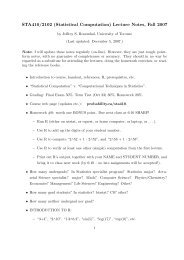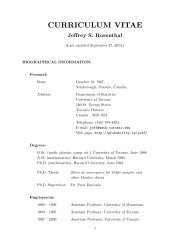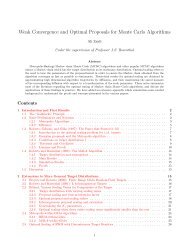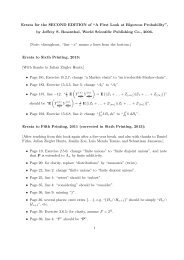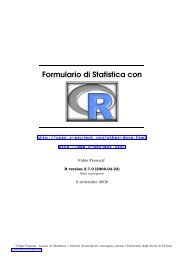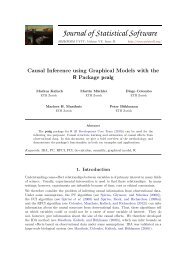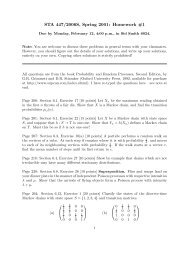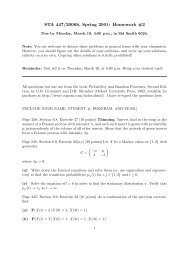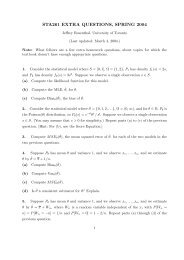this research paper - probability.ca
this research paper - probability.ca
this research paper - probability.ca
You also want an ePaper? Increase the reach of your titles
YUMPU automatically turns print PDFs into web optimized ePapers that Google loves.
Proposition 4.<br />
For fixed integers N, n, and i, with 0 < n ≤ N and 0 ≤ i ≤ N, letting<br />
j = j(k, l, m) = k + N − min(N, l + m), we have the identity<br />
1<br />
N + 1 =<br />
N ∑<br />
k=0<br />
∑<br />
l,m≥0<br />
m+l≤n<br />
[<br />
l<br />
N + 1 1 j=i +<br />
m<br />
N + 1 1 k=i + 1 ]<br />
N + 1 1 k≤i≤j R N,n,l,m,k .<br />
5. Interpreting the quantities R N,n,l,m,k .<br />
To clarify the result of Proposition 4, we wish to better interpret the quantities<br />
R N,n,l,m,k . Fix N, n ∈ N throughout. We first note the following.<br />
Proposition 5. If l + m ≤ N, then R N,n,l,m,k is equal to the <strong>probability</strong> that unconstrained<br />
ssrw starting at 0 and run for time n, has maximum value l, minimum value −m,<br />
and ends up at k − m. In symbols,<br />
R N,n,l,m,k = C l,−m (k − m) ,<br />
where<br />
[<br />
C ab (s) = P max Z t = a,<br />
0≤t≤n<br />
]<br />
min Z t = b, Z n = s ,<br />
0≤t≤n<br />
where {Z t } is unconstrained ssrw started at 0 and run for time n.<br />
Proof. Consider running CFTP as described above, using random variables U −n , . . . , U −1 .<br />
Let Z 0 = 0, and Z t = U −n + . . . + U −n+t−1 for 0 < t ≤ n. Then {Z t } is indeed equal to<br />
an unconstrained ssrw started at 0 and run for time n. However, it has now been coupled<br />
with the CFTP algorithm under consideration, and we shall make use of <strong>this</strong> fact.<br />
Now, suppose that for the CFTP algorithm, the event whose <strong>probability</strong> is R N,n,l,m,k<br />
has indeed occurred. That is, suppose that the bottom process of CFTP ends up at k, the<br />
top process has l holds, and the bottom process has m holds. We wish to see what effect<br />
these suppositions have on the unconstrained process {Z t }.<br />
Let −s be the time just after the last hold of the bottom process of the CFTP algorithm.<br />
Then the corresponding value of the {Z t } process, namely Z n−s , must be equal to<br />
−m. Furthermore, we will then have Z t ≥ −m for all t ≥ n − s. It follows that we will<br />
have min 0≤t≤n Z t = −m. Similarly, we will have max 0≤t≤n Z t = −m.<br />
8



